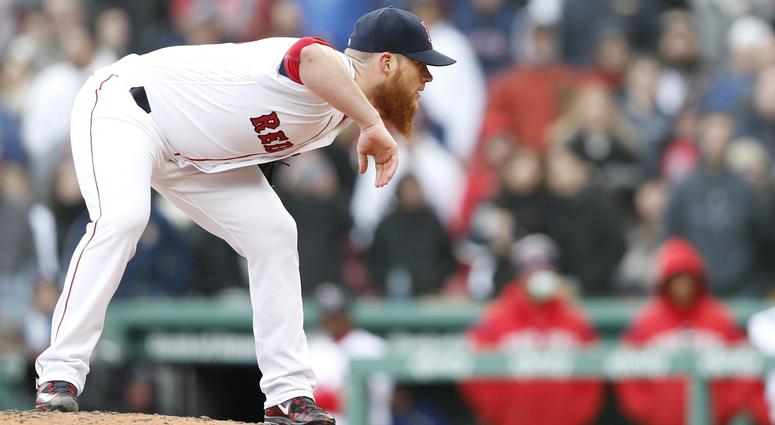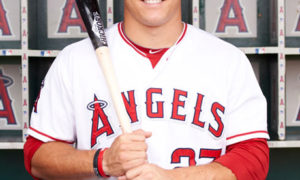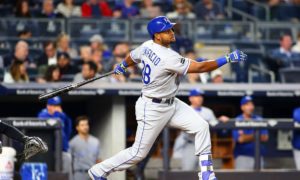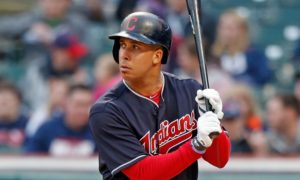The Moustakas Effect: Qualifying Offer Danger Ratings

We’re all infatuated with the idea of new. In every draft pick, we see the potential for greatness- the young star who will to take the franchise to the next level. This even applies to future draft picks. Each one is an opportunity to find a player whose number will be retired 20 years later. As Claudio Fernández-Aráoz wrote in It’s Not the How or the What but the Who:
We don’t work as hard evaluating insiders as we do outsiders. However, going outside is economically justified only 6% of the time as opposed to 30% for going “inside” for talent. When possible, promote from within after benchmarking to the best external potentials.
This is a quote about businesses recruiting executives, but there are applications for baseball as well. Promoting and developing players is crucial to success. (See the Orioles as a counterexample.) Draft picks are especially valuable in the age of bonus pool money, in which each draft pick increases the team’s ability to sign players to over-slot bonuses. Basically, more draft picks = good.
This is a big problem for six free agents. Patrick Corbin, Yasmani Grandal, Bryce Harper, Dallas Keuchel, Craig Kimbrel, and A.J. Pollock all received and declined qualifying offers of $17.9M for one year. As a result, whichever team signs them has to forfeit at least one draft pick. Making matters worse, their former teams will receive a compensatory draft pick when they sign elsewhere, disincentivizing them to re-sign the players who they were willing to pay nearly $18M on a one-year deal.
Being tied to draft pick compensation can dramatically hurt a free agent’s value. We’ll call this The Moustakas Effect. In 2017, Mike Moustakas set a Royals single-season record with 38 home runs, then declined the $17.4M qualifying offer and became a free agent. MLB Trade Rumors projected him to sign for five years and $85M. Instead, he returned to Kansas City for just $6.5M on a one year deal.
Moustakas is a free agent again without the qualifying offer restriction, so we’ll finally see what he’s really worth. He definitely lost the opportunity to earn a lot of money. The six free agents listed above are in the same position this winter. Here are danger rankings on a 1-10 scale of how much each of them should worry about The Moustakas Effect.
Patrick Corbin
Corbin is listed as the third best free agent on the market by MLB Trade Rumors, trailing only Bryce Harper and Manny Machado. He’s the top-ranked pitcher available. This past season, he turned in a stellar performance for the Diamondbacks with a 3.15 ERA, 2.47 FIP, and 246 strikeouts in 200 innings. His 6.3 fWAR was fourth best in baseball, and he finished fifth in NL Cy Young voting. He’s just 29-years-old, so the appeal is obvious.
That’s not to say he’s entirely safe to sign. He has a history of injuries that includes Tommy John surgery. 2018 was by far his best season, so he doesn’t have a great track record of consistency. His average fastball velocity dropped from 92.7 MPH in 2017 to 91.3 last year, which was the lowest of his career. He throws tons of sliders and sinkers, which put stress on the arm and increase the chances of future injury.
Regardless of the risks, any team who needs pitching (read: every team) should blow up his agent’s phone. The consensus best pitcher on the market shouldn’t have to worry too much about the qualifying offer.
Corbin’s Moustakas Danger Rating: 2/10
Yasmani Grandal
Before he was stuck with the qualifying offer, I wrote about Grandal’s free agency prospects. There are very few catchers in baseball who match his production offensively or defensively. He’s an elite pitch framer and dangerous switch-hitter who just turned 30. He’s undoubtedly one of the top five catchers in the game, and you could make a case for him as the absolute best.
At the same time, there are quite a few other catchers available this winter, including Wilson Ramos, Jonathan Lucroy, Robinson Chirinos, Kurt Suzuki, Martin Maldonado, and Matt Wieters. None of the others will cost the signing team a draft pick, and all should have a lower asking price. The trade market for catchers should also be fascinating. The Marlins are dangling J.T. Realmuto, as usual, and the Rays already acquired Mike Zunino from the Mariners. The Dodgers have two of the game’s best catching prospects nearly ready to take over the daily duties behind the plate, which means that they may not be excited about a multi-year deal. In short, Grandal is awesome, but there’s a high risk of collective frugality from teams with so many other options.
Grandal’s Moustakas Danger Rating: 8/10
Bryce Harper
Here’s the big ticket item. Needing no introduction, Harper reportedly turned down a $300M extension from the Nationals. MLB Trade Rumors projects a 14 year, $420M contract in free agency, so that was probably a good decision. When it comes to the Harper/Machado level of superstar free agent that only comes around every few years, the qualifying offer matters very little.
Put it this way: if the reticence to lose a draft pick prevents teams from backing up the truck for Harper, the entire financial structure of the sport has completely collapsed. This is equivalent to free agency apocalypse. Thankfully, it’s not going to happen.
Harper’s Moustakas Danger Rating: 1/10
Dallas Keuchel
Keuchel, the soft-tossing lefty former Cy Young award winner, is another jewel of the free agent market. The 31-year-old has been a consistently solid starter for the Astros since 2014, and started 34 games last year. He doesn’t rack up a ton of strikeouts and his average fastball velocity is only 90.2 MPH. That’s never stopped him from getting lots of outs on ground balls and soft contact. He throws five different pitches and pretty much all of them sink, making it hard to square him up.
MLB Trade Rumors projects a four year, $92M contract for him. They rank him as the fourth best overall free agent, just behind Corbin. They’ll probably have similar markets as lefty starters who thrive with primarily breaking pitches. Keuchel is two years older, but the average annual value should be similar. The qualifying offer really shouldn’t slow him down too much.
Keuchel’s Moustakas Danger Rating: 3/10
Craig Kimbrel
Kimbrel is arguably the greatest short reliever in baseball history, or at least since Mariano Rivera. In his career spanning 532 2/3 innings, he has a 1.91 ERA, 1.96 FIP, 0.92 WHIP, 14.7 K.9, and 4.8 H/9. All of these numbers are among the very best of all time. He’s on a Hall of Fame career arc and he won’t even turn 31 until May.
However, free agency rewards future potential, not past performance, and there are reasons to worry about Kimbrel. His fastball velocity declined from 98.7 to 97.5 MPH this year. He surrendered seven home runs and walked 12.6 percent of opposing batters. The resulting 3.13 FIP was the worst of his career. These numbers are still elite by anyone else’s standards, but they could represent a little bit of a decline.
Relievers are historically less valued and lower paid than other positions for several reasons.
- They’re often volatile, and a bad year can come at any moment.
- At the same time, any team might have star relievers emerge out of nowhere.
- They pitch fewer innings and impact fewer plate appearances than other players.
Kimbrel is the best of the best at his position. That being said, no reliever has ever signed for as much as $17.9M per year- the cost of the qualifying offer. Wade Davis set the record with $17.3M average annual value last year (which didn’t work out so well). Throw in the draft pick compensation factor, and even the great Kimbrel might have a hard time getting paid what he expects.
Kimbrel’s Moustakas Danger Rating: 9/10
A.J. Pollock
There just aren’t a lot of great center fielders these days, Mike Trout notwithstanding. Only five of them exceeded 4.0 fWAR, and only two of them topped 5.0 (Trout and Lorenzo Cain). At 2.5 fWAR, Pollock wasn’t even close, but that only tells part of the story. Through the first 40 games of the season, he slashed .293/.349/.620. Then he got hurt and didn’t return until July. The rest of the way he hit just .236/.297/.407. If the pre-injury numbers show Pollock’s true talent, he should do just fine in free agency.
Unfortunately, injuries are the rule for him and not the exception. 2015 was his only complete injury-free season. Since then, he’s played just 12, 112, and 113 games each year. It’s hard to justify big money for a player who gets hurt as much as him, especially at 31-years-old playing an up-the-middle defensive position. He’s still at least an average center fielder, but if he signs a four year, $60M contract as suggested by MLB Trade Rumors, how deep into that contract can he remain in center? How much will he stay on the field? These will be difficult questions for GMs to answer when they’re writing him a check.
Pollock’s Moustakas Danger Rating: 7/10
-Daniel R. Epstein




















